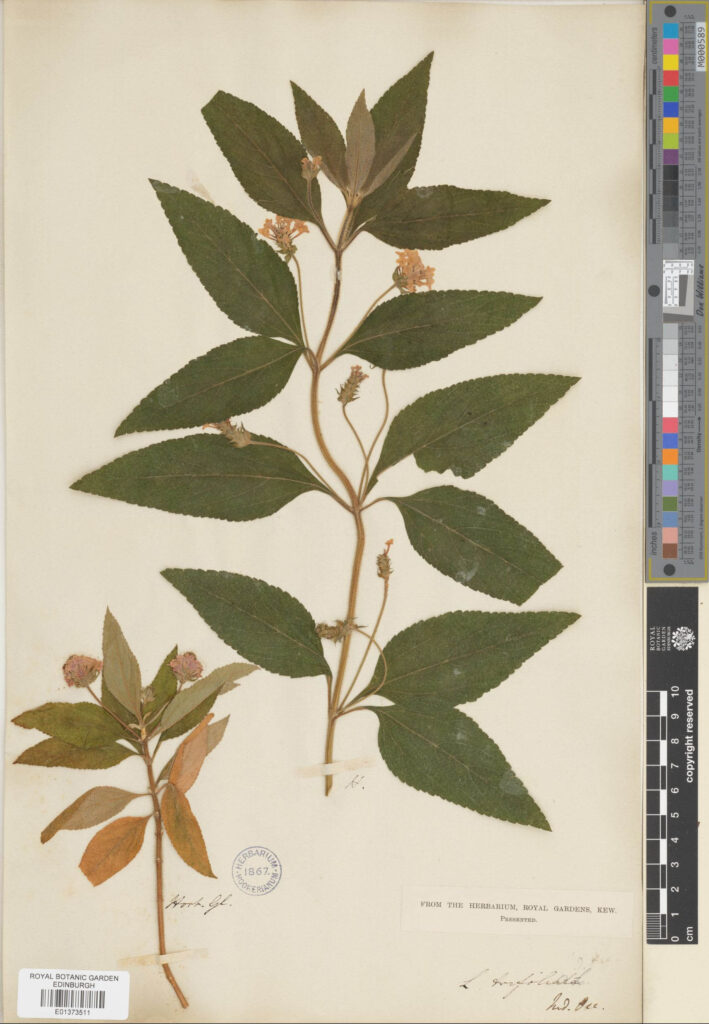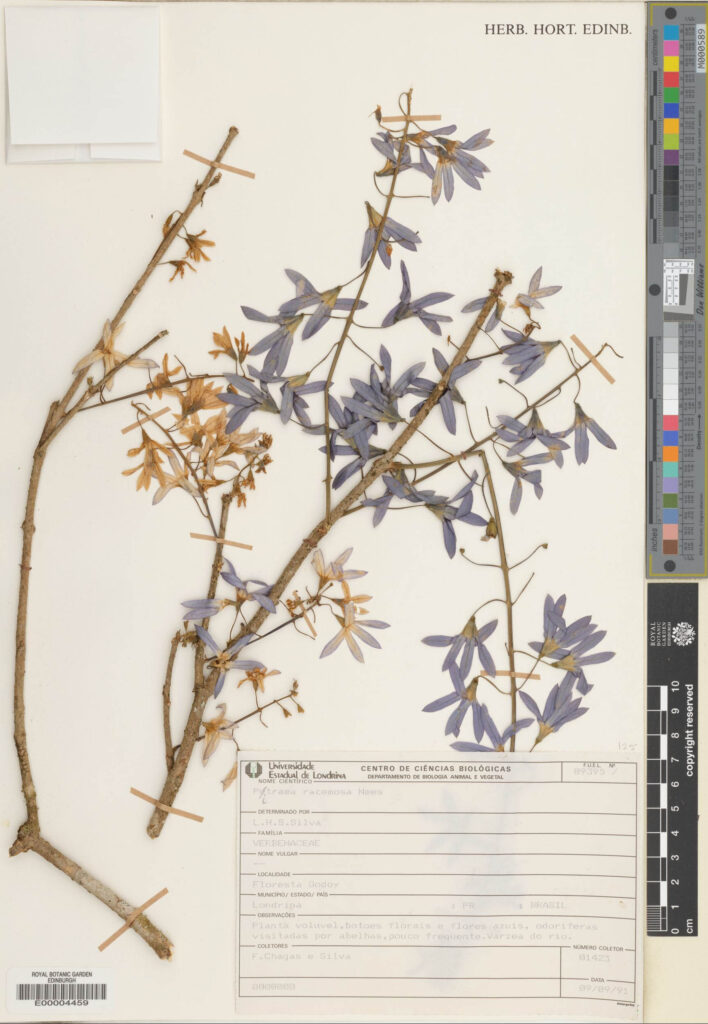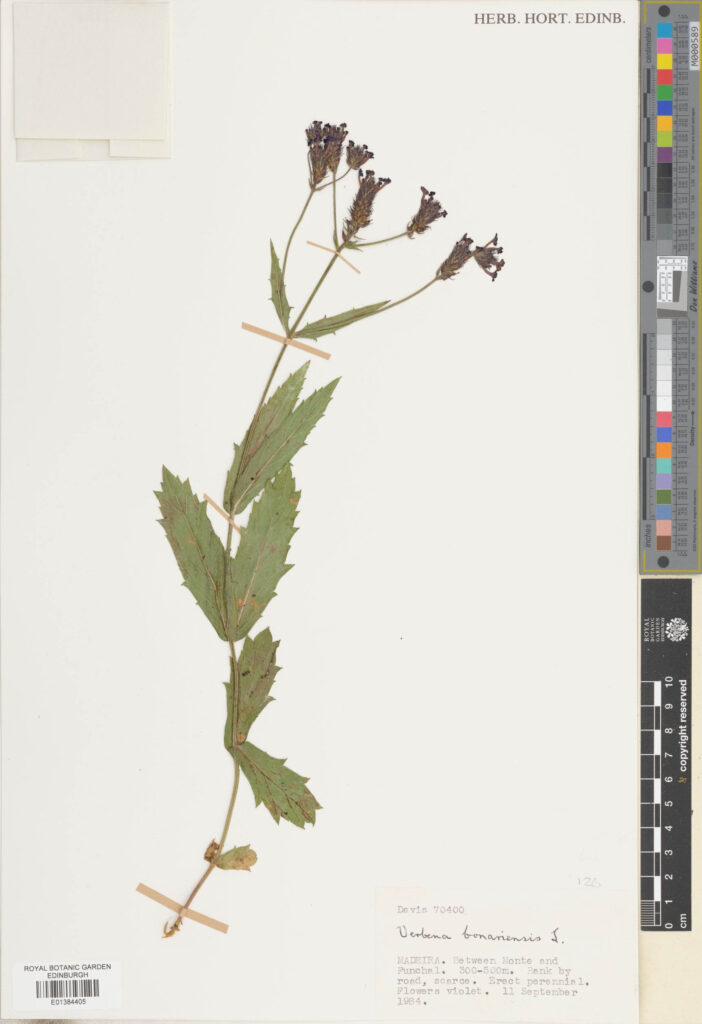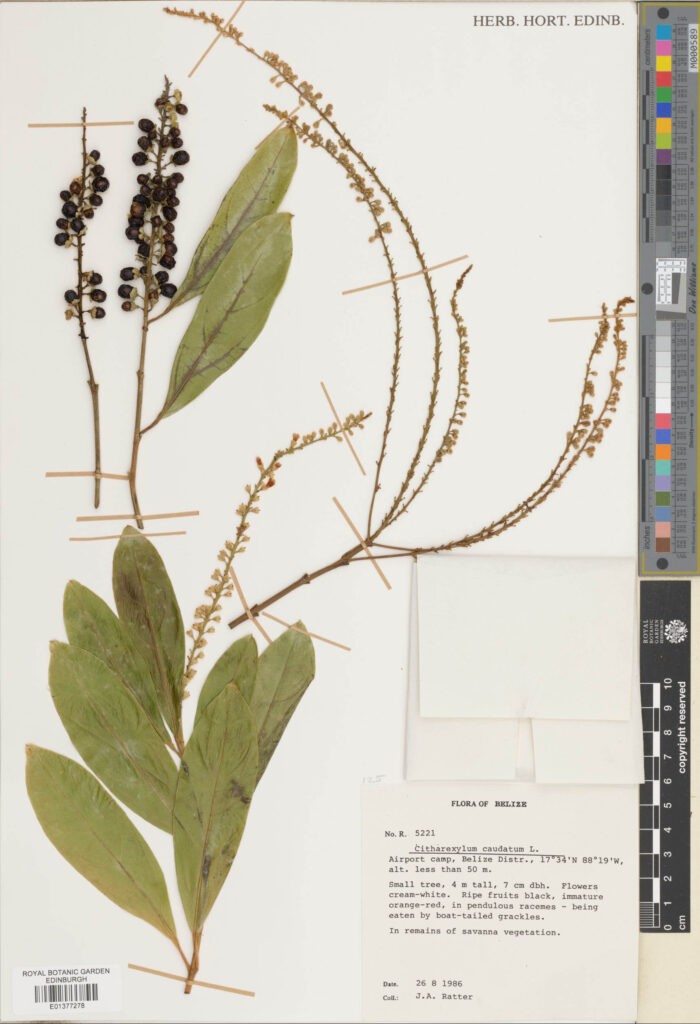The following blog was written by Rebecca Camfield a digitiser in the Herbarium.
Since 2021 we have increased our digitisation capacity with the goal of getting to 1 million specimens imaged by Autumn 2024. Each digitiser is assigned a family of plants to work through. This series of blogs will spotlight the families that have been completed by a member of the team.
The Verbenaceae, commonly known as the Verbena family, are found for the most part in the tropics and are notable for having clusters of small, scented flowers and 4-sided stems. They are either herbaceous plants, shrubs or lianas. The family consists of 32 genera and roughly 800 species. The most well-known is probably Lemon Verbena (Aloysia citrodora) used as an aromatic.

Historically it was a much larger family but due to phylogenetic studies a lot of genera have been moved to other members of the Lamiales. Over 40 went to Lamiaceae, a few to Stillbaceae and even a couple to Oleaceae.
Lantana with 150 species is the biggest genus followed closely by Lippia and Stachytarpheta. Lantana consists mostly of lianas with nectar heavy flowers that attract butterflies and are used to attract them and moths to gardens, yet they also run rampant in countries where it has been introduced, like Australia. They can also be toxic to livestock if ingested and must be cleared.
The family also contains the fiddlewood trees of Citharexylum which as the name suggest is used in the making of string instruments.

Our Collections
Prior to mass digitisation we had 1,472 specimens online and now have 3,949 online and we currently hold 146 type specimens. Our collection can be viewed here.
Top 5 Regions
| No. of Specimens | Herbarium Filing Region |
| 577 | East Tropical South America |
| 477 | North America |
| 364 | Temperate South America |
| 352 | Central America |
| 316 | West Tropical South America |
Despite being found worldwide our collections are heavily from the Americas, yet this is the diversity hot spot for the family so not too surprising.
Top 5 Genera
| No. of Specimens | Genus |
| 981 | Verbena |
| 597 | Lantana |
| 383 | Phyla |
| 336 | Lippia |
| 234 | Stachytarpheta |
With its global distribution it’s not surprising that Verbena is the largest genus in our collections. Lantana and Lippia have similar distributions whereas Lippia and Stachytarpheta are more limited to the Americas and Africa. They have been introduced to other continents. Although considering a few of the top 5 have double or even triple Verbena’s species count it is surprising it has such a lead on the rest of the group.


